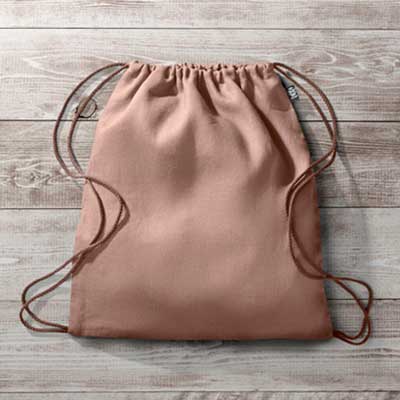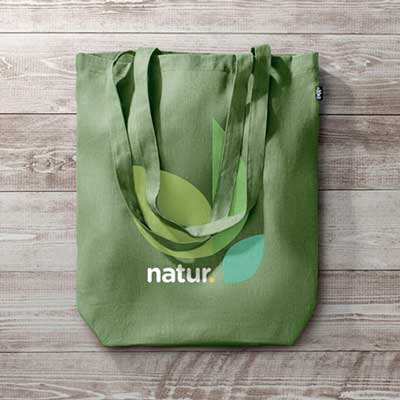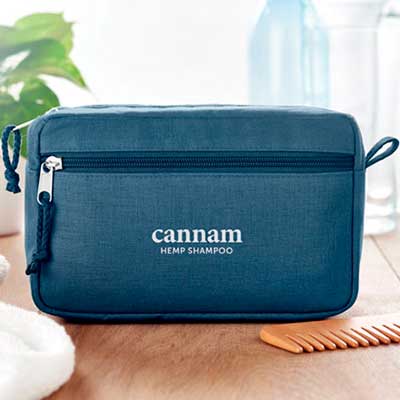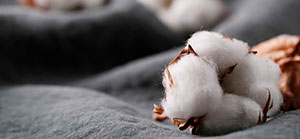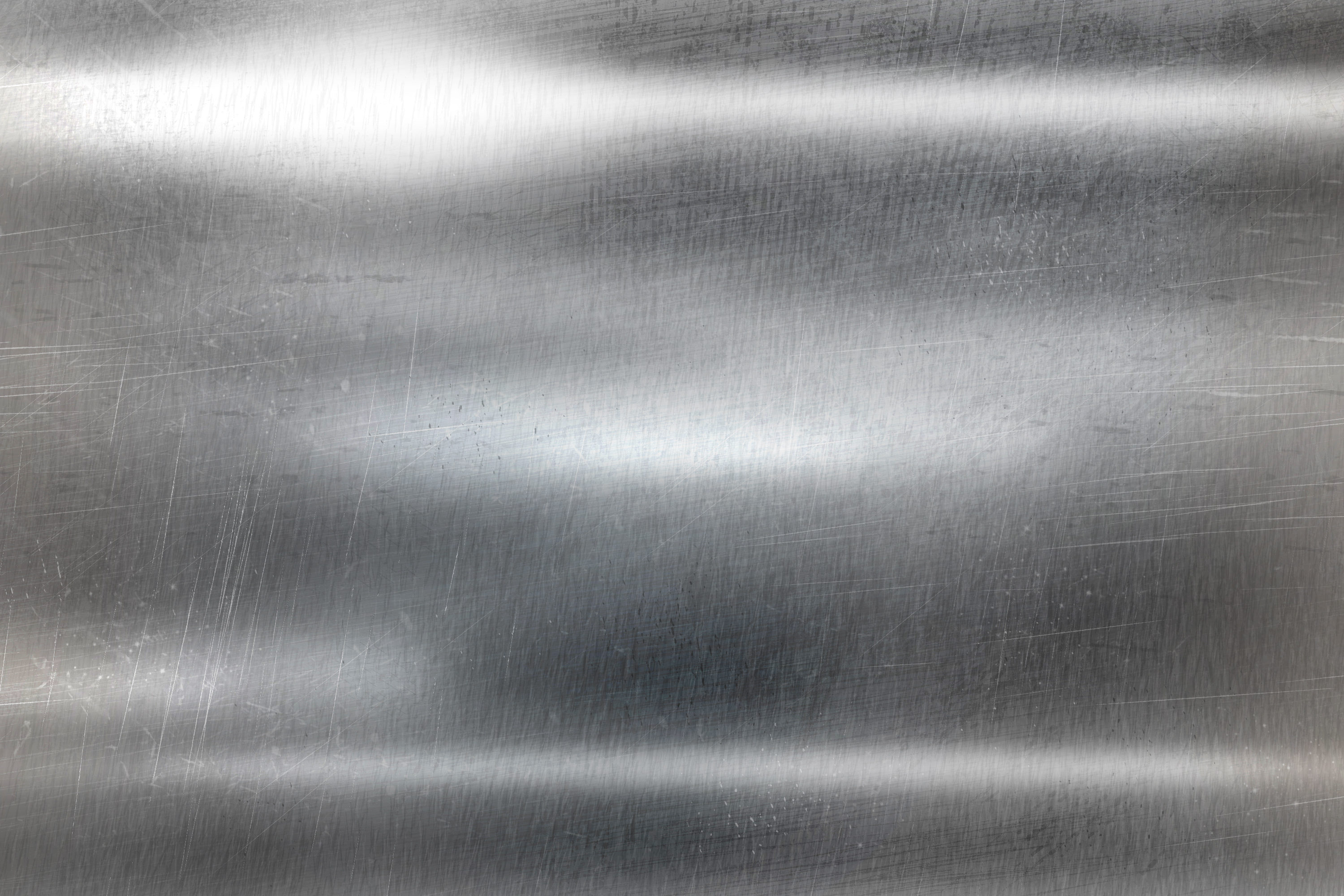What is hemp?
Versatile subspecies of Cannabis sativa that grows rapidly and has become very popular for its sustainable advantages.
You can find it in our catalog in a wide variety of eco-frendly.
Hemp and industrial hemp are the names given to the plant of the cannabinaceae family and the fiber obtained from it. Among the different uses it has, textile hemp stands out. Its fabric is one of the oldest and most ecological, made from hemp fibers extracted from the inside of the stalk of the cannabis plant, which came from vegetables and are biodegradable.
The stem has great flexibility and impermeability, making it ideal for garment making. What makes this material sustainable is that its cultivation is fast-growing, it does not require herbicides or pesticides, and its sowing hardly needs any water, so the manufacturing process of its fabric uses up to four times less water than that of cotton. It is not only used to create clothing, it has an infinite number of uses, such as personalized toiletry bags or backpacks.
This makes it a great ally for the textile industry, not only because of its environmental benefits, but also because of its durability.
What is hemp used for, and what uses can it have?
It has many uses, as it is not only present in the textile sector, but can be used to make many other things, such as paper, biofuels and oils. It is also used in the plastics, food and cosmetics industries, among others.
Textile
This fiber is very old, in fact its initial use was to make fabrics for objects such as clothing, paper or carpets. It is a stereotype to think that this material is only related to the hippie movement, as this conception is changing in recent years, and it is becoming a sustainable alternative to many other components.
In addition, it is relevant to highlight that in recent years it has begun to be used in haute couture as one of the main fabrics for the manufacture of garments.
Plastic
Industrial hemp is also used to make plastics, which are used by the automobile industry or for construction, mainly for their insulation capacity.
It is very popular in countries such as Ireland and the Netherlands.
Another example is its use in the manufacture of various beauty and body care products.
Merchandising
In the merchandising sector, this material has an increasing presence, we are beginning to find a multitude of articles, which also have the option to personalize them.
There are many alternatives, ranging from drawstrings bags to kitchen aprons.
It is the perfect way to make sustainable corporate gifts.
If you look around your own home, you're bound to find multiple containers made from it, and it's its lightweightness, insulation capacity, and durability that make it perfect for storing both liquid and solid food.
You can also find it in various promotional items, as it seems to be in vogue in the world of promotional gifts, especially for items like aluminum bottles and metal keychains.
What are the benefits of using hemp?
Fabrics made from this hemp fiber are stronger and more durable compared to cotton. They also offer excellent breathability and insulation. But the main advantages it offers are its sustainability and the benefits it brings to the environment. It is easy and economical to grow.
Its rapid growth prevents the growth of weeds and therefore reduces the use of pesticides. It also improves the structure of the soil, as it allows a high percentage of nutrients to be returned to the soil.
What products can we find made from this material?
Here are some examples of personalized advertising gifts that you can find made from 100% ecological and recyclable hemp, perfect ideas if you want to make a sustainable and original gift.
Best Marking Techniques for Hemp Products
The best techniques for customizing hemp products are screen printing, screen and digital transfers and embroidery.
Screen Printing
It's a quite traditional method where traced images on a template are transferred onto a mesh with ink and applied to a surface. Thanks to this process, it's possible to achieve greater durability and a good finish on any material. It can be used for a wide variety of materials, including paper, fabric, plastic, glass, metal, wood…
Screen Transfer
It's a printing process used to customize t-shirts, bags, caps, and other textile products. It involves printing the image or design onto a transfer film using screen printing, which is then placed on the surface of the object and heat and pressure are applied to transfer the design.
It's a useful method for producing large quantities of customized products with complex and detailed designs, and it also allows for a wide range of color options and finishes. Additionally, the end result is durable and resistant to washing and wear.
Digital Transfer
A technique that allows marking on a wide variety of materials, including textiles, paper, plastic, ceramics, and many others. The process involves using a special printer that prints the desired image onto a transfer sheet using pigment or sublimation inks.
One of its advantages is that it allows for high-resolution printing, fine details, and multiple colors. Moreover, it's a very versatile technique that enables the production of small and large quantities of customized products quickly and efficiently.
Embroidery
It's an ancient textile decoration technique that uses a needle and thread to sew stitches into the fabric, creating a design.
Different types of stitches can be used, from simple chain stitches to more intricate and detailed satin stitches. It's typically used to decorate garments or fabric accessories such as tote bags. Its great advantage is durability and high resistance. Additionally, it allows for the creation of raised designs and designs with multiple colors.
As you can see, there are many ways to customize hemp materials products, so you can choose the technique that best suits your needs, considering the desired outcome. For example, for more elegant promotional gifts, embroidery is a great option. Or, for large quantities, it's convenient to choose screen or digital transfer.
Differences between Hemp and Cotton
Although both materials can be used for manufacturing products of the same category or type, they have several notable differences. Let's explain them below:
Hemp
It comes from the Cannabis plant, specifically from the sativa L. variety.
High durability and resistance to wear. It's not as soft as cotton.
Highly breathable and cool. It can absorb large amounts of water.
It has natural antibacterial properties.
Hemp cultivation is very sustainable and does not require the use of pesticides or herbicides.
Cotton
It comes from the cotton plant.
It's softer but less durable.
It's a breathable material but less so than hemp, and it absorbs less water.
It doesn't have antibacterial properties.
Cotton cultivation uses large amounts of water and pesticides, making it less sustainable than hemp.
In summary, compared to cotton, hemp is a more resistant, cool, and durable material that has natural antibacterial properties. It's also more sustainable and environmentally friendly, making it an excellent choice for textile manufacturing and other products.
How much does hemp cost?
It tends to cost a bit more than other eco-friendly materials such as organic cotton, but it is still affordable. However, although it may be a little higher in value, one should not forget the great benefits it has, including the quality of its products and, more importantly, the benefits it brings to the environment.
Summary
In summary, hemp is a material that comes from the cannabis family and is used in a wide variety of applications, including the production of textiles, food, cosmetics, and paper products.
In the merchandising market, this material has become quite popular due to its sustainable and eco-friendly advantages, as well as its durability and strength. Moreover, hemp can be customized with branded designs using various printing techniques, allowing businesses to create unique and personalized merchandise products that are environmentally friendly and have a positive impact on the brand image.

